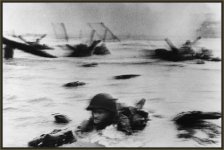Vital Spark
New member
In looking at photos, is the subject the most important consideration , or the actual image?
One often sees images that are perfectly composed, and exposed,; yet they are of banal subjects.
Other times one sees extraordianry subjects treated with blurry exposure, alkward framing, etc... ad nauseum,
What do you think?
One often sees images that are perfectly composed, and exposed,; yet they are of banal subjects.
Other times one sees extraordianry subjects treated with blurry exposure, alkward framing, etc... ad nauseum,
What do you think?

